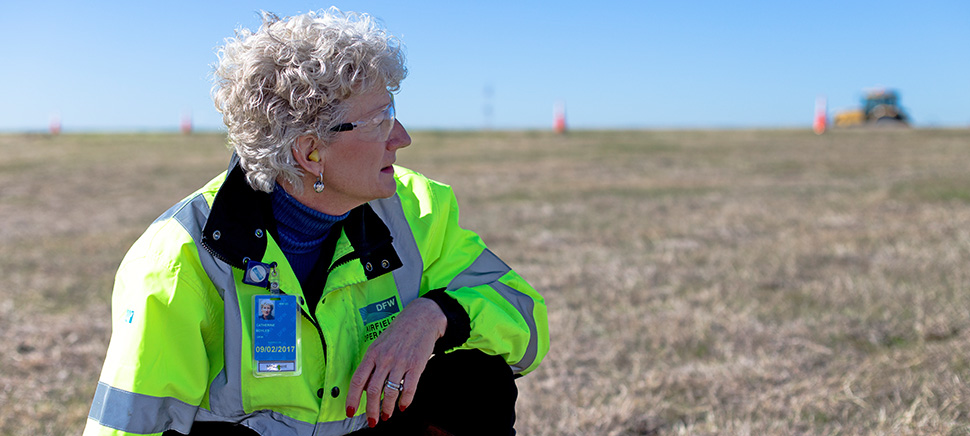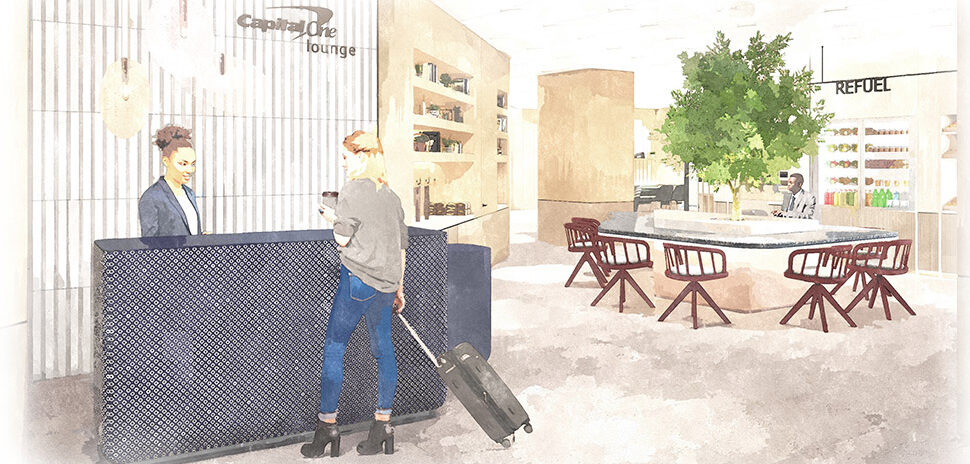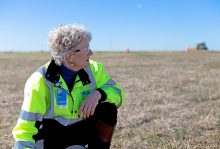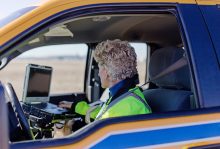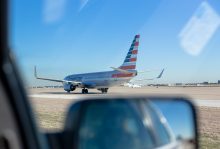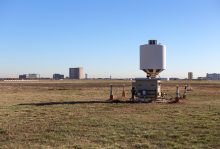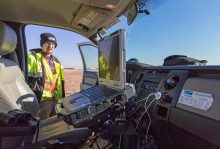Aviation experts say bird strikes can cause an estimated $600 million a year in damage in the United States to commercial and military aircraft, with 168,974 bird strikes reported between Jan. 1, 1990 and June 30, 2015, according to the Federal Aviation Administration.
In an effort to keep its operations running unhindered and prevent bird strikes, Dallas Fort Worth International Airport has adopted a strategy blending Mother Nature and technology for an innovative approach to prevention.
Cathy Boyles, wildlife administrator and biologist for DFW Airport, and her team, employ an array of techniques including pyrotechnics, aviation radars, hand-clappers, propane cannons, and falconry and biodiversity management to stop the birds from interfering with airport operations and stop bird strikes.
“We utilize the broad scope of preventative measures ranging from nature to cutting edge technology, blending the organic element and technology.” Boyles says.
Boyles sat down with Dallas Innovates to discuss her approach:
What type of technology is utilized?
There is no magic potion that will fix the problem; we blend a variety of techniques.
Pyrotechnics and propane cannons that use sonic blasts are used to control the birds. DFW International Airport supports L-Band radar technology which integrates logarithms and typography. We have been a host site for bird radars since well before I was here. Around 15 years ago, we collaborated with radar vendors to help develop and tweak the way radars are implemented at airports.
How is falconry used at DFW Airport?
We contract with a falconer. He has the hawks, and must adhere to state and federal protocol. The trained hawks are used to remove the birds from those hot spots of activity. In the central terminal, there are large oak trees and roosting black birds see that as a prime area for nesting during the winter time. The operation takes place in coordination with the tower and Air Traffic Control to ensure that there is no spillover into the airfield.
What is the Botany Program?
We contract with a botanist who has evaluated our airfield and identified plants that are attractants; we have located over two dozen types of plants that attract birds. They look at the content of seed-eating birds, identifying the kind of seeds they have been eating. This allows us to correlate seeds being eaten to the seeds on our airfields.
What is the process and strategy behind blending organic and technological measures?
It’s a calculated process which requires understanding the big picture. You have to comprehend how the airport functions, bird migratory patterns, seasonality of bird activity, aviation radars and how they all connect with each other. After gathering the information we choose the best dispersion technique based on the data and indicators.
How do you anticipate the technology will be used in the future?
In the future, we would love to figure out how to integrate multiple radars for a more detailed perspective of the airport. The greatest asset of the technology is its ability to increase our knowledge base for our airport personnel and all of the involved entities engaging with birds on and near the airport. Bird behavior is so dynamic and does not follow a pattern, this makes it impossible to anticipate what they will do, and that’s why innovation is so important.
What was your most memorable incident involving wildlife at the airport?
During my first four months at DFW International Airport a kangaroo got loose. I got a call that a kangaroo kicked out of its cargo container, thankfully, by the time I arrived the situation was under control.
What is your view of wildlife management?
It’s all about saving lives and helping the animals as well. It’s my passion.
DFW Airport Fast Facts
- Size: DFW covers more than 26.9 square miles
- Year Opened: 1974
- World Rankings: Fourth in terms of operations
- Runways: Seven
- On-Airport Employees: Approximately 60,000
- Total Economic Output: $37 billion
- Daily Passengers: Approximately 175, 829
- 2015 Total Passengers: 64, 177, 618
Source: ACI Traffic Statistics
For a daily dose of what’s new and next in Dallas-Fort Worth innovation, subscribe to our Dallas Innovates e-newsletter.

